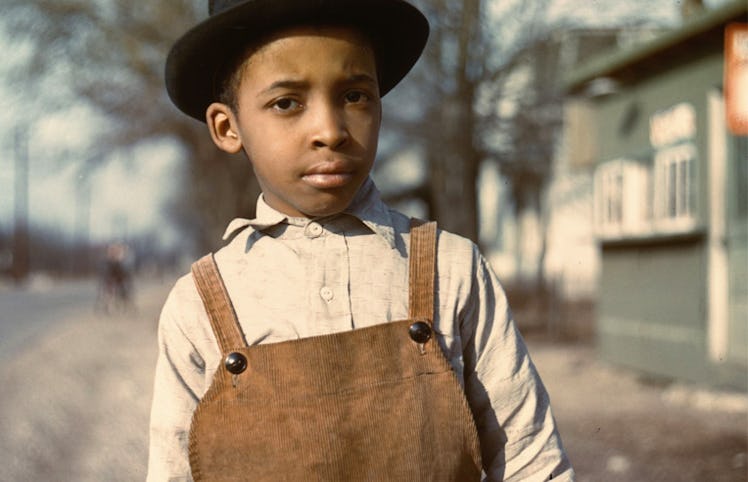American Boyhood Began When American Child Labor Ended
As American businesses expanded at the turn of the 20th century, American boys labored in difficult conditions, unprotected by laws and purposely underpaid.

American boyhood has never been a given. For roughly half the history of the United States, boys were treated both as a viable, affordable, and often expendable workforce. In 1900, nearly one in five American workers were under the age of 16. This population of roughly two million was majority male — though numbers were skewed by domestic responsibilities — and extraordinarily visible in the south, where children worked in mills, and in northern cities, where they worked street jobs. As American businesses grew, American boys labored in difficult conditions, unprotected by child labor laws and, in many cases, purposely underpaid.
The anti-child labor movement began in earnest around the turn of the 20th century. It was not a radical movement exactly — coinciding as it did with other labor pushes — but it did fly in the face of American tradition. The Pilgrims, after all, had seen child labor as a means of teaching boys and girls to toe the line of the faithful. And the puritanical notion that children must be worked, pushed to its own ends by big business, remained persuasive to many parents (particularly parents struggling to make ends meet). When the National Child Labor Committee was formed in 1904, public support was hardly a given. But, by 1916, Congress had passed the Keating-Owen act regulating commerce in goods made in part by employees under the age of 16. That act, which was struck down by the Supreme Court, was rapidly replaced by myriad acts of state legislation and at least one federal bill that, again, fell to the gavel.
Legislation, fought by big businesses, took time to pass and got back-burnered during WWI, but public opinion had changed. On June 2, 1924, Congress pushed through an amendment to the Constitution designed to allow for the specific regulation of labor performed by people under the age of 18 with the support of Franklin Delano Roosevelt. States were slow to sign, but they did. By the time WWII exploded on American shores, youth labor was in steep decline. As war buoyed the country out of the Great Depression, new norms emerged. Kids went to school.
To look back at images of American boys at work prior to the passage of child labor laws is to face a hard truth about the past and, perhaps, about the present and the future. There are no sacrosanct stages of life — no periods of time in which need or greed can be relied upon to defer to morality or to the kindness that adults owe children. Boyhood is more of an opportunity than it is a natural phenomenon. Today, 88 million boys work as child laborers. That’s 12 million more people than lived in America at the end of the 19th century. The problem has not disappeared for boys or girls. Americans have simply grown unaccustomed to looking it in the face.
To do that is to see the eyes of men buried in the faces of boys and to understand that boyhood is both a privilege and an ongoing social project — one of the most critical of this, and every, time.
US NATIONAL ARCHIVES
Hyman Alpert, a 12-year-old Newsboy. poses near a newsstand. When this photo was taken in 1909, Alpert had been working the streets of New Haven, Connecticut for three years. He spent his evenings at the Boys Club.
Library Of Congress/ Lewis Hine
Three young employees of Englahardt & Co., a cigarmaking business in Tampa, Florida, enjoy some leisure time together in 1909. Boys were employed when there was work and many of them smoked. Photographer Lewis Hine worked for the National Child Labor Committee and documented children at work across the country.
Public Domain
Because maintaining a smile while having a portrait painted or a long-exposure photograph taken, grins were uncommon in photographs until after the turn of the 20th century. One gets a sense from the rigid posture of these siblings that no one had to ask them to hold back.
US NATIONAL ARCHIVES
A doffer boy, employed to rapidly replace spindles in the spinning frames inside textile mills, poses outside Loray Mill in Gastonia, North Carolina. In November 1908, the boy had already worked for two years at the mill. Doffer jobs, which required more speed than strength, was commonly done by children.
Congress/ Lewis Hine
A group of doffer boys poses outside Bibb Mill #1 in Macon, Georgia in 1909.
US NATIONAL ARCHIVES
Andrew Stefanik, a Massachusetts doffer boy poses next to machinery in Chicopee in fall of 1911.
Library Of Congress/ Lewis Hine
Boys shoot craps on the street in Providence, Rhode Island in 1912. With adult responsibilities often came adult vices.
Lewis Hine
A messenger working for the Mackay Telegraph Company in Waco, Texas pauses on an errand in September 1913.
Library Of Congress
Delegates to the Niagara Peace Conference of 1914 are escorted to a meeting by a very young man.
This article was originally published on